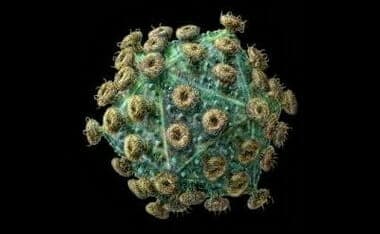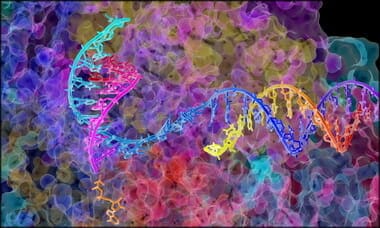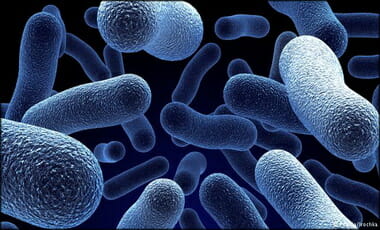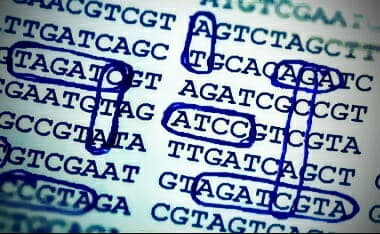(Originally Posted EARLY 2016)
Stephen C. Meyer appearing in Darwin’s Dilemma talks about Richard Dawkins’s “climbing Mt. Improbable.”
Biologist Ann Gauger discusses the challenge posed to Darwinian natural selection by the process of metamorphosis found in butterflies and other creatures. Gauger is featured in the science documentary “Metamorphosis,” which deals with butterflies, evolution, and intelligent design.
Why This Post? It is a post dealing with Natural Selection, something I haven’t dealt with specifically on my site, here. I did post on the topic at my Blogspot site, but have — through conversation — felt the need to import it to my .com. It is in it’s original sense, a response to conversations that took place in a forum, so you will see names out of the blue that at one time were in context. (I will be responding to challenges that I am not well read on the topic, and when I wrote this response originally, I have more than doubled my library… so be aware that this is a conversation from 2000 posted on my old site in 2007.) I will also update it a bit based on newer conversation and dissent. A good portion of the older post comes from the excellent book, Darwin’s Enigma (esp this chapter).
…Palaeoecologists like me are now bringing a new perspective to the problem. If macroevolution really is an extrapolation of natural selection and adaptation, we would expect to see environmental change driving evolutionary change. Major climatic events such as ice ages ought to leave their imprint on life as species adapt to the new conditions. Is that what actually happens?
[….]
“The link between environmental change and evolutionary change is weak – not what Darwinists might have predicted”
[….]
This view of life leads to certain consequences. Macroevolution is not the simple accumulation of microevolutionary changes but has its own processes and patterns. There can be no “laws” of evolution….
Another evolutionist that shows the vacuous nature of natural selection via many generations of fruit flies and the mutagenic selections imposed on it’s “fitness,” — the famous Theodosius Dobzhansky Drosophila (the fruit fly) experiments. This creation of mutations that in effect “increased stress” of “natural” selection on this species disproved Darwin’s baby showed that the predictions made were disproved by the experiments.
It is similar to the experiment subjecting a cactus to the same conditions that had resulted in it mutating. To their amazement, no matter how many times they performed the experiment, the cactus only changed into that one mutated form. The scientists in this experiment did not get a myriad of dysfunctional mutations before getting a functioning cactus. They didn’t even get several different functioning cacti. The only result was this one mutation, and there seemed to be nothing random about it. (PP. 13-15)
One of the cornerstone theories within evolutionary (neo-Darwinian) thinking has been “natural selection.” Natural selection, long thought to be the initiating force behind the many changes that would have needed to occur if evolutionary theory is correct, is now being abandoned or at least moved a few notches down in importance. There is a lot of information below, so take you time, watch the video posted and the other (Dean Kenyon) I linked to further down in the post. If you are a biology student, you may learn quite a bit more than the teacher would have liked you to, for, you see… the modern day biology teacher isn’t going to teach you that there are disagreements within the scientific community on these issues, he or she is merely there in that classroom to protect a dogma.
Take note that this dated response was part of a larger conversation, so you will see names (handles) of people that I respond to.
The Rhetoric of Charles Darwin~ via John Angus Campbell:
Rapier, the site you referenced is well received. The evidence from the pre-Cambrian shows that oxygen was indeed present, in large number. This fact did away with the Miller – Urey experiment and the others that followed, as they posited an oxygen free environment. However, the site you mentioned rests on two glaring problems. I will elucidate somewhat. The first being:
“No matter whether the atoms of carbon, nitrogen, oxygen, and others were there at Earth’s formation, or arrived later in alien bodies from space, they constituted the building blocks of life. These elements by intrinsic chemical nature formed organic compounds that were washed by rain into the seas…. The very nature of carbon chemical bonding to itself and other atoms predetermines the formation of organic compounds, and the subsequent catalyzing of more complex organic compounds.”
Some really smart people, from Charles Darwin to scientists today, believe in abiogenesis. A “primordial soup” of chemicals led to life as we know it. But is this really the case?
This concept of “carbon chemical bonding to itself and other atoms predetermines the formation of organic compounds” is commonly referred to as Biochemical Predestination. The term was coined by Dean H. Kenyon (and his co-author G. Steinman) who wrote a university level textbook on this subject. Kenyon is the [now emeritus] professor of biology at the University of San Francisco and was a staunch evolutionist when he wrote the book Biochemical Predestination (McGraw-Hill, 1969), which was the best-selling advanced level book on chemical evolution in the decade of the 1970’s.
Keep in mind that these two guys started this line of thought. One of Dean Kenyon’s students gave him a copy of a book written by Dr. A. E. Wilder-Smith (who holds three earned Ph.D.’s) entitled The Creation of Life: A Cybernetic Approach to Evolution. In this book by Dr. Wilder, Dean Kenyon’s book is critiqued. Instead of Kenyon saying – “Well, Dr. Wilder is just a creationist, who would listen to him?” – Dr. Kenyon read the book and tried to answer the arguments in it against his own book. When he couldn’t, he began to investigate where the evidence led to… outside of his previous presuppositions, which were based on naturalism (evolutionary thinking).
Now, Dr. Kenyon refutes with the latest evidence offered, this can be found in an excellent video entitled Unlocking the Mystery of Life. When you said, “Firstly, you need to do some researching on the history of our planet…”, I have. I will comment again that I have over 2,000 books in my home library [now over 5,000], and outside of politics, the creation/evolution controversy takes up most of the space. I have well over 100 books by evolutionary biologists, archaeologists, physicists, geologists, etc. Also, I have well over 200 books by creation biologists, archaeologists, physicists, geologists, etc. I wonder if you have gone to the sources themselves like I have… in other words, read some good books on the matter at hand. Just a challenge for you to be open-minded, that’s all. Kenyon, for instance, says:
“No experimental system yet devised has provided the slightest clue as to how biologically meaningful sequences of subunits might have originated in prebiotic polynucleotides or polypeptides.”
He put in his two cents on the problem of chirality as well, “Many researchers have attempted to find plausible natural conditions under which [left-handed] L-amino acids would preferentially accumulate over their [right-handed] D-counterparts, but all such attempts have failed. Until this crucial problem is solved, no one can say that we have found a naturalistic explanation for the origin of life. Instead, these isomer preferences point to biochemical creation.”
The reason I put those quotes there and will follow them with some papers by Dr. Kenyon is that since you referenced me to a site that mentions biochemical predestination, I figured you would want to read his latest work, as science is “self-critiquing,” he has critiqued the theory he helped found.
- The RNA World: A Critique
- What do Ribozyme Engineering Experiments Really Tell Us About the Origin of Life?
Also, an excerpt of a larger interview with Dean Kenyon:
Another problem that I find is in the quote:
- “The immutable law of natural selection dictates that life will retain those features that foster survival.”
This apparent simple sentence makes reference to two theories that really are not science or Law being that they incorporate circular reasoning, that is, natural selection and the survival of the fittest.
From a rabid anti-creationist (posted a few years back at Space Battles):
“Evolution is promoted by its practitioners as more than mere science. Evolution is promulgated as an ideology, a secular religion — a full-fledged alternative to Christianity, with meaning and morality. I am an ardent evolutionist and an ex-Christian, but I must admit that in this one complaint — and Mr [sic] Gish is but one of many to make it — the literalists are absolutely right. Evolution is a religion. This was true of evolution in the beginning, and it is true of evolution still today…. Evolution therefore came into being as a kind of secular ideology, an explicit substitute for Christianity.”
Michael Ruse, professor of philosophy and zoology at the University of Guelph, Canada [recently moved to Florida], “How Evolution Became a Religion: Creationists Correct?” National Post, pp. B1, B3, B7 May 13, 2000.
What Can It Explain?
To summarize what I have already written, the modern position of the synthetic theory is: the struggle for existence plays no part in evolution. The direction of evolution is determined solely by the characteristics of those animals and plants that are successful breeders. We are unable to say anything about why a particular characteristic might favor, or prejudice, the survival of any particular animal or plant.
Natural Selection
Perhaps an even more damaging criticism of the concept of natural selection is that – limited though its content may be – it is so nebulous that it can be made to fit a whole range of mutually contradictory outcomes of the evolutionary process. Natural selection is entirely compatible with the notion that all organisms in stable environments have reached a fitness peak on which they will remain forever. At the same time natural selection is entirely compatible with the idea that all organisms should regress to the safest common denominator, a single-celled organism, and thus become optimally adapted to every habitat.
In precisely the same way, because of its infinitely elastic (explained more later) definition, natural selection can be made to explain opposed and even mutually contradictory individual adaptations. For example, Darwinists claim that camouflage coloring and mimicry (as in leaf insects) is adaptive and will be selected for, yet they also claim that warning coloration (the wasp’s stripes) is adaptive and will be selected for. Yet if both propositions are true, any kind of coloration will have some adaptive value, whether it is partly camouflaged or partly warning, and will be selected for. As a theory, then, natural selection makes no unique predictions but instead is used retrospectively to explain every outcome:And a theory that explains everything in this way, explains nothing. Natural selection is not a mechanism: it is a rationalization after the fact.
Natural selection is the process by which the most successful populate the world, and the less successful breeders die out – regardless of their respective characteristics.
- “The giraffe has a long neck because…?”
Here we get stuck. The only help we get from synthetic evolution is that the giraffe has survived because it has survived. (This can be applied to the person who tried to explain to me how the cleaner fish “evolved” to pick the teeth of its predator, as well as the below posts.)
Is It Testable? Can It Predict?
Ernst Mayr made some startling admissions about Darwin’s model of mutation and natural selection. He said, “Popper is right; this model is so good that it can explain everything, as popper has rightly complained.” This relates to the requirement in science that a theory or model must make exclusionary predictions. If the concept is so generalized that it can explain any conceivable type of evidence, then it is of no value to science. For example, if a theory can explain both dark and light coloring in moths, both the presence and absence of transitional forms in the fossil record, complex life forms either above or below in rock strata, etc., then it has no value in making predictions. Now, Dr. Mayr (who was professor of zoology atHarvard University) believes that “ultimately, all variation is, of course, due to mutation….”
Professor Gould (Harvard’s esteemed paleontologist) has this to say when asked,“What role do mutations play in speciation?” Dr, Gould responded:
“A mutation doesn’t produce major new raw material. You don’t make a new species by mutating the species…. That’s a common idea people have; that evolution is due to random mutations. A mutation is NOT the cause of evolutionary change. Something else than natural selection brings about species at new levels, trends and directions.”
Keep in mind that Mayr and Gould are both evolutionists. In a discussion of how evolutionary theory can explain the fact that eels, which normally reproduce only in salt water, have certain landlocked species that reproduce in fresh water, Dr Weisskopt said,
“I think it was Medawar who said that one thing about the theory of evolution [and he quoted Popper] that it is not falsifiable, that whatever happens you can explain it. I think you have an example here.”
On the same subject, Dr. Fraser said,
“It would seem to me that there have been endless statements made and the only thing I have clearly agreed with through the whole day [referring to the Wistar Symposium] has been the statement made by Karl Popper, namely, that the real inadequacy of evolution, esthetically and scientifically, is that you can explain anything you want by changing your variable around.”
George Wald agreed,
“This cannot be done in evolution, taking it in its broad sense, and this is really all I meant when I called it tautologous in the first place. It can, indeed, explain anything. You may be ingenious or not in proposing a mechanism which looks plausible to human beings… but it is still unfalsifiable theory.”
Dr. Schutzenberger of the University of Paris reported on why all attempts to program a model of evolution on a computer had completely failed. He said that neo-Darwinism asserts that without anything further, selection brings about a statistically adapted drift when random changes are performed in a population. He insisted,
“We believe that is not conceivable. In fact if we try to stimulate such a situation by making changes randomly at the typographic level (by letters or blocks, the size of the unit does not matter) on computer programs we find that we have no chance (i.e., less than one in ten to the thousandth power) even to see what the modified program would compute: it just jams. Thus… we believe that there is a considerable gap in the neo-Darwinian theory of evolution, and we believe this gap to be of such a nature that it cannot be bridged within the current conception of biology.”
Near the end of the Symposium, Murray Eden explained:
“In consequence, the theory has been modified to the point that virtually every formulation of the principles of evolution is a tautology…. It is our contention that if ‘random’ is given a serious and crucial interpretation from a probabilistic point of view, the randomness postulate is highly implausible and that an adequate scientific theory of evolution must await the discovery and elucidation of new natural laws – physical, physicochemical, and biological…. In summary, it is our contention that the principle task of the evolutionist is to discover and examine mechanisms which constrain the variation of phenotypes to a very small class and to relegate the notion of randomness to a minor non-crucial role.”
Observable, Repeatable, and Refutable?
To the surprise of many casual observers, and to the embarrassment of many journalistic influences, evolution has never been demonstrated to be a viable explanation for life origins (or cosmic origins for that matter). By definition the scientific method requires that the objects or events under study must beOBSERVABLE, REPEATABLE, and REFUTABLE. Evolution certainly cannot be observed or repeated in the field or the laboratory. With this in mind, evolutionist Karl Popper, the honored referee of the modern scientific method, pointed out:
“It follows that any controversy over the question whether events which are in principle unrepeatable and unique ever do occur cannot be decided by science; it would be a metaphysical controversy.”
In his introduction to a 1971 publication of Darwin’s Origin of the Species, L. Harrison Matthews, British biologist and evolutionist, wrote:
“The fact of evolution is the backbone of biology, and biology is thus in the peculiar position of being a science founded on an unproved theory – is it then a science or a faith? Belief in the theory of evolution is thus exactly parallel to belief in special creation – both are concepts which believers know to be true but neither, up to the present, has been capable of proof.”
Intense controversy has erupted within the evolutionary camp. Newsweek featured an article by Sharon Begley titled “Science Contra Darwin.” She revealed:
“The great body of work derived from Charles Darwin’s revolutionary 1859 book, On the Origin of Species, is under increasing attack – and not just from creationists…. So heated is the debate that one Darwinian says there are times when he thinks about going into a field with more intellectual honesty: the used car business.”
Agnostic (non-creationist) Michael Denton (in his book Evolution: A Theory In Crisis) wrote that the evolutionary paradigm was, “… an idea which is more like a principle of medieval astrology than a serious twentieth century theory….” Steven M. Stanley (evolutionist), Proceedings of the National Academy of Science, 72:640-660, (1975), p.648.
“If most evolutionary changes occur during speciation events and if speciation events are largely random, natural selection, long viewed as a process guiding evolutionary change, cannot play a significant role in determining the overall course of evolution.”
Richard C. Lewontin (evolutionist); “Adaptation.” Scientific American (and theScientific American Book, Evolution), Sept. 1978.
“Adaptation leads to natural selection, natural selection does not necessarily lead to greater adaptation … Natural Selection operates essentially to enable the organisms to maintain their state of adaptation rather than improve it … Natural selection over the long run does not seem to improve a species’ chances of survival, but simply enables it to ‘track,’ or keep up with, the constantly changing environment”
Pierre-Paul Grassé (evolutionist), Evolution of Living Organisms, Academic Press, New York (1977), pp. 97, 98.
“Mutations, in time, occur incoherently. They are not complementary to one another, nor are they cumulative in successive generations toward a given direction. They modify what pre-exists, but they do so in disorder.”
Arthur Koestler (evolutionist), Janus: A Summing Up, Random House, New York, 1978, pp. 184-185.
“In the meantime, the educated public continues to believe that Darwin has provided all the relevant answers by the magic formula of random mutation plus natural selection — quite unaware of the fact that random mutations turned out to be irrelevant and natural selection a tautology.”
- ONE ASKS: “who survives?”
- THE ANSWER: “the fittest.”
- SO ONE ASKS: “who is the fittest?”
- THE ANSWER: “those who survive.”
Philosophy professor Gregory Alan Pesely notes:
“One of the most frequent objections against the theory of natural selection is that it is a sophisticated tautology… What is most unsettling is that some evolutionary biologists have no qualms about proposing tautologies as explanations. One would immediately reject any lexicographer who tried to define a word by the same word, or a thinker who merely restated his proposition, or any other instance of gross redundancy; yet no one seems scandalized that men of science should be satisfied with a major principle which is no more than a tautology.”
Fitness does not always mean survival. The smartest, most resourceful persons are not necessarily those who leave the most offspring. So in recent years, evolutionists reduced the definition of “fitness” to simply “those who leave the most offspring.”But even this entails a rather circular argument. As geneticist Conrad Waddington of Edinburgh University noted:
“There, you do come to what is, in effect, a vacuous statement: ‘Natural selection is that some things leave more offspring than others;’ and you ask, ‘which leaves more offspring than others;’ and it is ‘those who leave more offspring;’ and there is nothing more to it than that…”


























